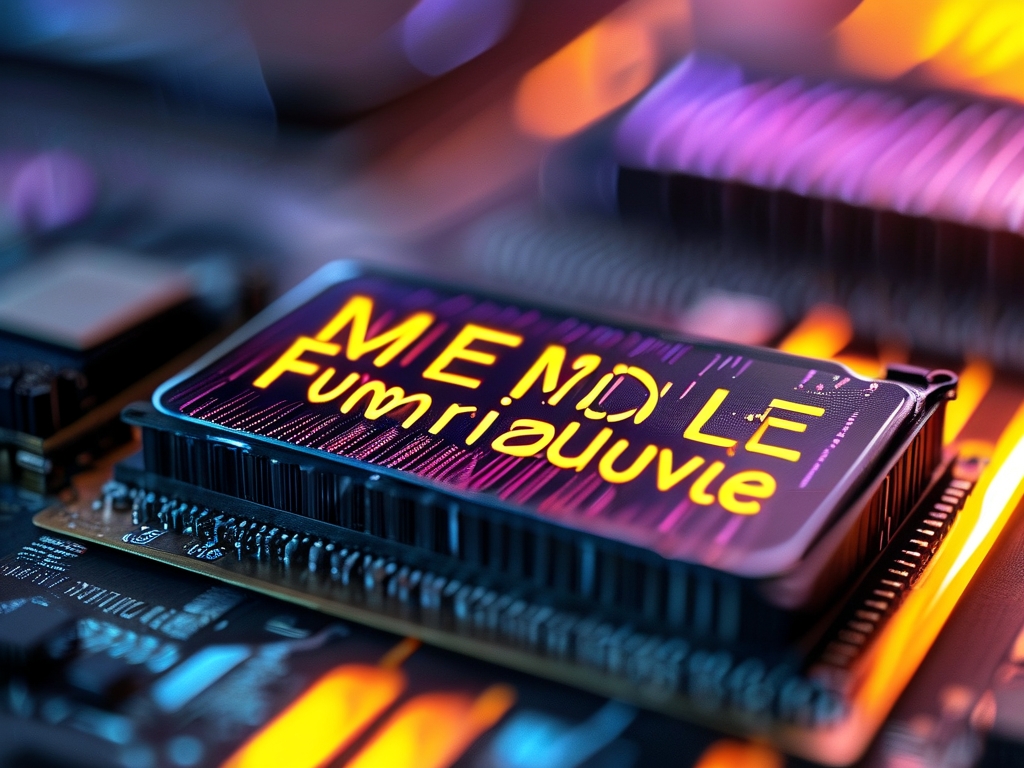Memory frequency and voltage are critical parameters in modern computing systems, directly impacting performance, stability, and power efficiency. Engineers, overclockers, and PC enthusiasts often seek to optimize these values to achieve desired outcomes. This article explores the mathematical relationship between memory frequency and voltage, introduces practical calculation formulas, and discusses their real-world applications.

1. Theoretical Foundations
Memory modules, such as DDR4 or DDR5, operate at specific frequencies (measured in MHz) and require precise voltage levels (measured in volts) to function reliably. Higher frequencies enable faster data transfer rates but demand increased voltage to maintain signal integrity. Conversely, lowering voltage reduces power consumption but risks instability at elevated frequencies. This interdependence forms the basis of memory tuning.
The core formula governing this relationship is: [ V{min} = V{base} + k \times (f{target} - f{base}) ] Where:
- ( V_{min} ) = Minimum required voltage for stability
- ( V_{base} ) = Base voltage at reference frequency
- ( k ) = Voltage-frequency coefficient (varies by memory type)
- ( f_{target} ) = Target frequency
- ( f_{base} ) = Base reference frequency
For example, DDR4 modules typically have a ( V{base} ) of 1.2V at 2133 MHz. If aiming for 3200 MHz with a ( k )-value of 0.0005 V/MHz: [ V{min} = 1.2 + 0.0005 \times (3200 - 2133) = 1.2 + 0.5335 = 1.7335V ] This simplified model highlights the linear approximation used in preliminary calculations.
2. Factors Influencing Voltage-Frequency Dynamics
2.1 Silicon Quality
Manufacturing variances in memory chips (silicon lottery) affect voltage tolerances. High-quality chips may sustain higher frequencies at lower voltages.
2.2 Temperature Effects
Increased heat raises electrical resistance, requiring additional voltage for stability. A temperature-adjusted formula incorporates thermal coefficients: [ V{adj} = V{min} \times (1 + \alpha \times \Delta T) ] Where ( \alpha ) is the material-specific temperature coefficient (~0.003/°C for DRAM).
2.3 Signal Integrity Constraints
At extreme frequencies, signal degradation necessitates non-linear voltage scaling. Advanced models use quadratic terms: [ V{min} = V{base} + a(f - f{base}) + b(f - f{base})^2 ] Coefficients ( a ) and ( b ) are derived from empirical testing.
3. Practical Calculation Workflow
Step 1: Identify Baseline Parameters
- Obtain ( V{base} ) and ( f{base} ) from memory specifications
- Determine ( k )-value via manufacturer datasheets or controlled testing
Step 2: Define Target Frequency
- Select ( f_{target} ) based on performance goals
- Ensure compatibility with motherboard and CPU limitations
Step 3: Calculate Theoretical Voltage Apply the linear or quadratic formula to estimate ( V_{min} )
Step 4: Iterative Testing
- Incrementally increase voltage while stress-testing stability
- Monitor temperatures using tools like HWInfo or Thaiphoon Burner
Step 5: Apply Safety Margins Add 2-5% to calculated voltage to account for real-world variability
4. Case Study: DDR4 Overclocking
Consider a 3200 MHz DDR4 kit (XMP profile: 1.35V) aiming for 3600 MHz:
- Baseline: ( f{base} = 3200 \text{ MHz}, V{base} = 1.35V )
- Assume ( k = 0.0004 \text{ V/MHz} )
- Calculation: [ V_{min} = 1.35 + 0.0004 \times (3600 - 3200) = 1.35 + 0.16 = 1.51V ]
- After thermal adjustments (ΔT = 10°C): [ V_{adj} = 1.51 \times (1 + 0.003 \times 10) = 1.51 \times 1.03 ≈ 1.555V ]
- Final safe voltage: ( 1.555 \times 1.03 ≈ 1.60V )
This demonstrates how theoretical models guide real-world tuning while emphasizing the need for empirical validation.
5. DDR5 Considerations
Next-gen DDR5 introduces decision feedback equalization (DFE) and on-die ECC, altering traditional voltage relationships. The PMIC (Power Management Integrated Circuit) enables finer voltage control, requiring revised calculation approaches: [ V{min} = V{base} + \frac{f{target} - f{base}}{f{scale}} ] Where ( f{scale} ) accounts for improved signal processing (typically 800-1200 MHz/V for DDR5).
6. Risks and Limitations
- Voltage Ceilings: Exceeding 1.5V for DDR4 or 1.6V for DDR5 risks permanent damage
- Degradation: Sustained high voltage accelerates electromigration in circuits
- Diminishing Returns: Beyond optimal frequencies, performance gains become negligible compared to power/heat increases
7. Software Tools for Automation
Applications like DRAM Calculator for Ryzen integrate these formulas with database-driven presets, automating voltage-frequency calculations while incorporating:
- Memory IC type (e.g., Samsung B-die, Micron E-die)
- Motherboard topology (T-topology vs. daisy-chain)
- Cooling capacity inputs
8. Future Directions
Machine learning algorithms are being trained to predict voltage-frequency curves using:
- Historical overclocking data
- Real-time sensor feedback
- Material science models
These systems aim to replace manual calculations with adaptive, self-tuning memory controllers.
Mastering memory voltage-frequency calculations empowers users to optimize systems effectively. While foundational formulas provide starting points, successful implementation requires understanding of hardware limitations, environmental factors, and safety protocols. As memory technologies evolve, so too will the mathematical models governing their operation-blending physics, engineering, and computational innovation.






